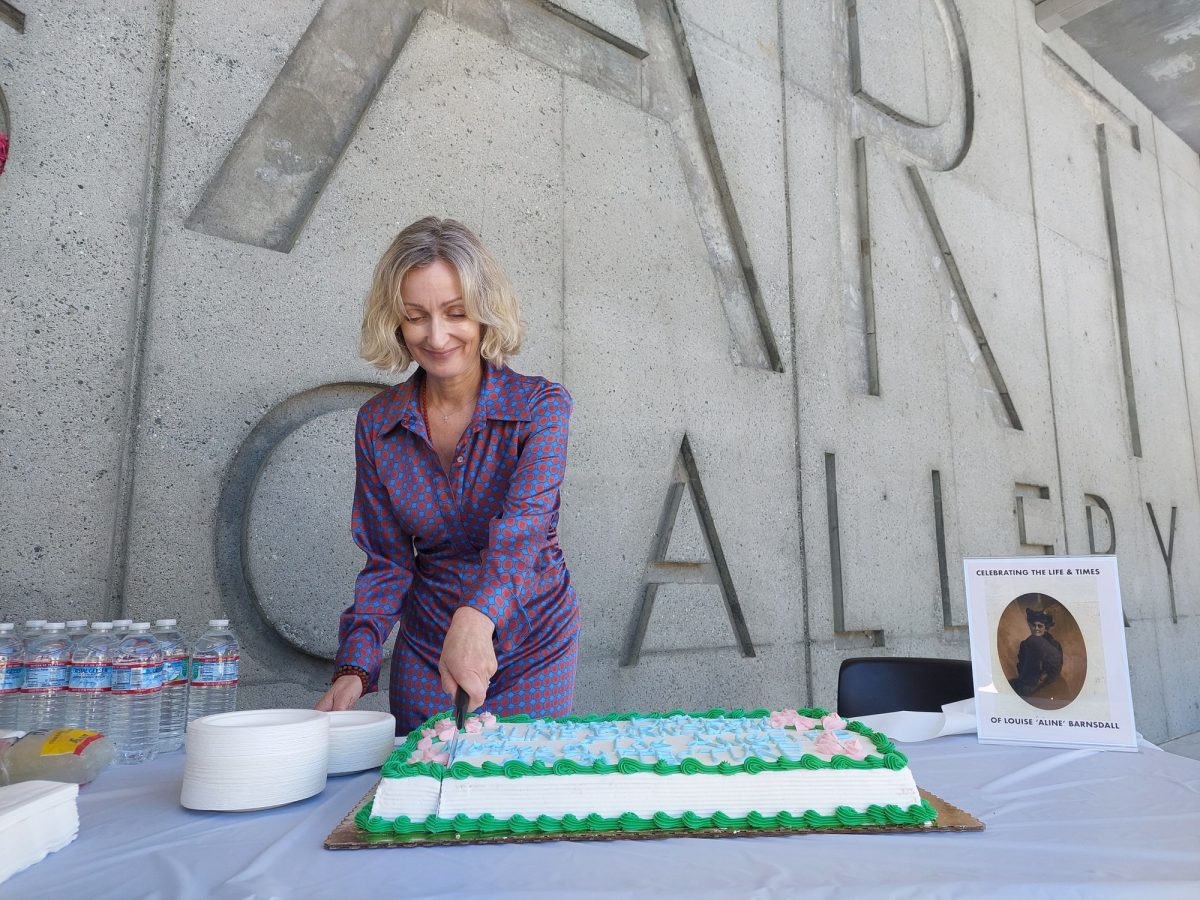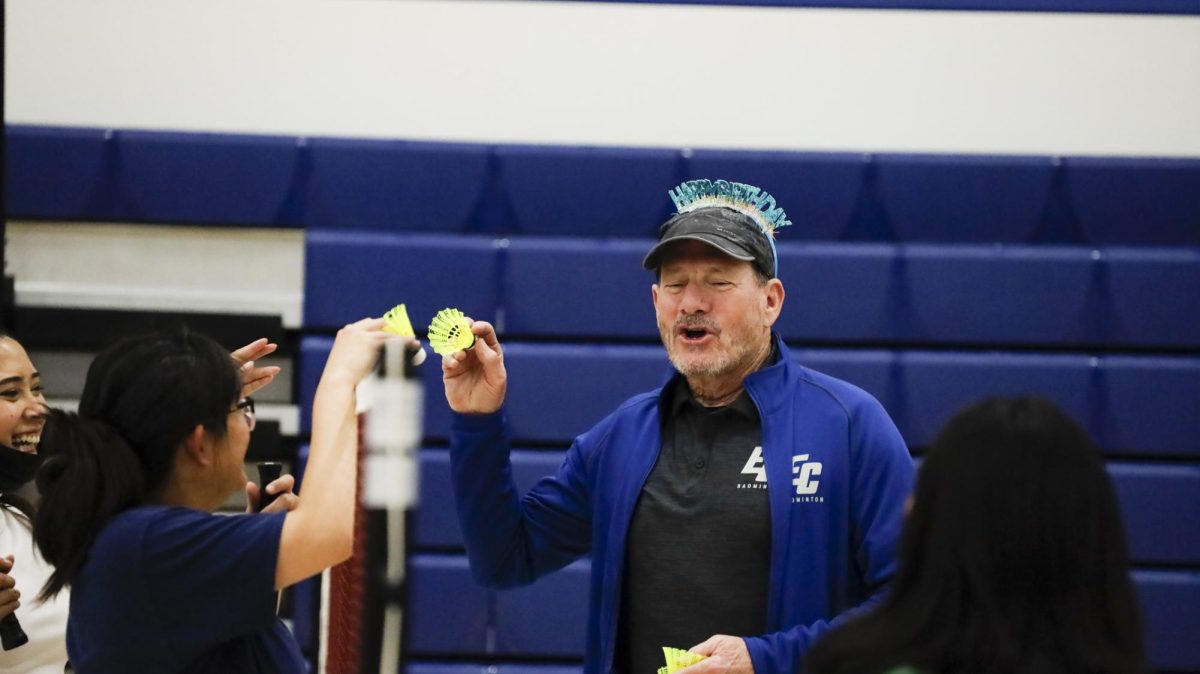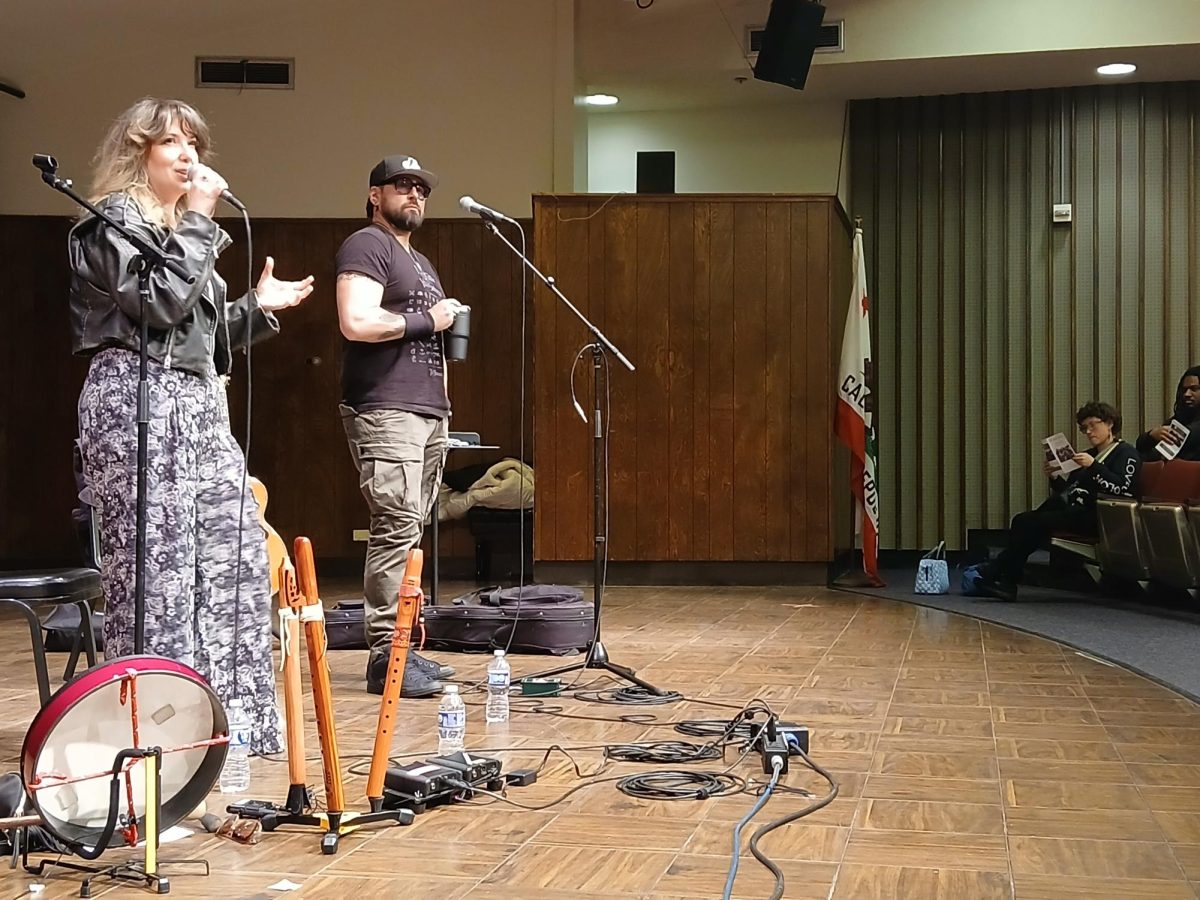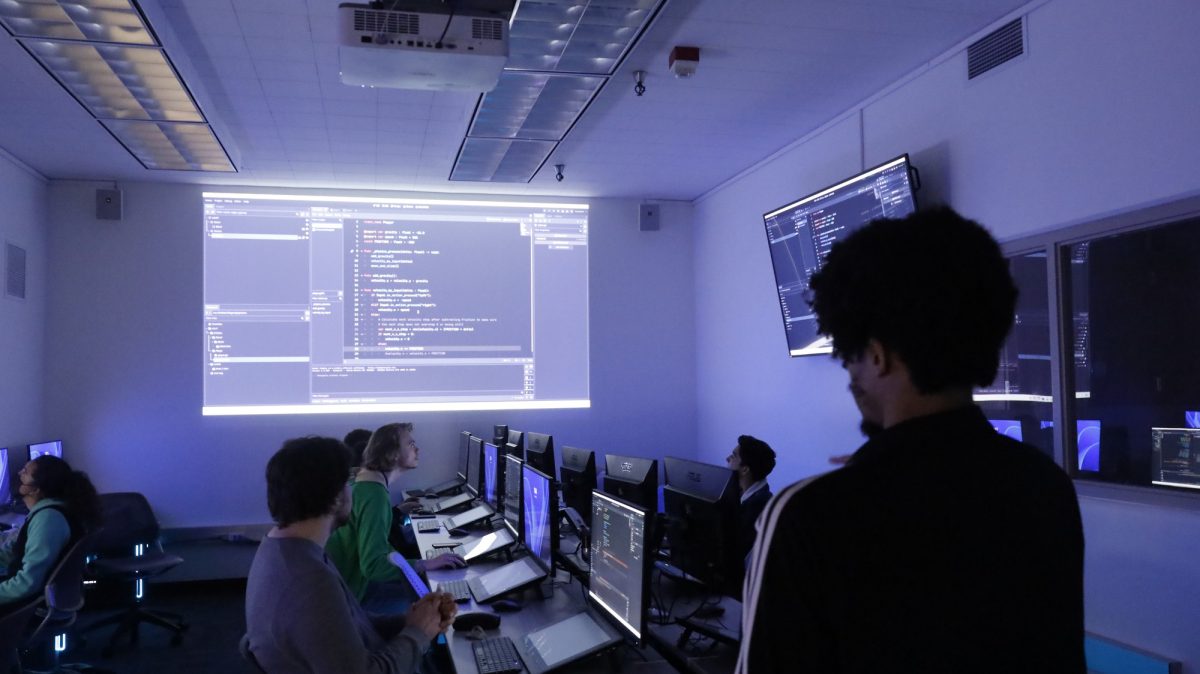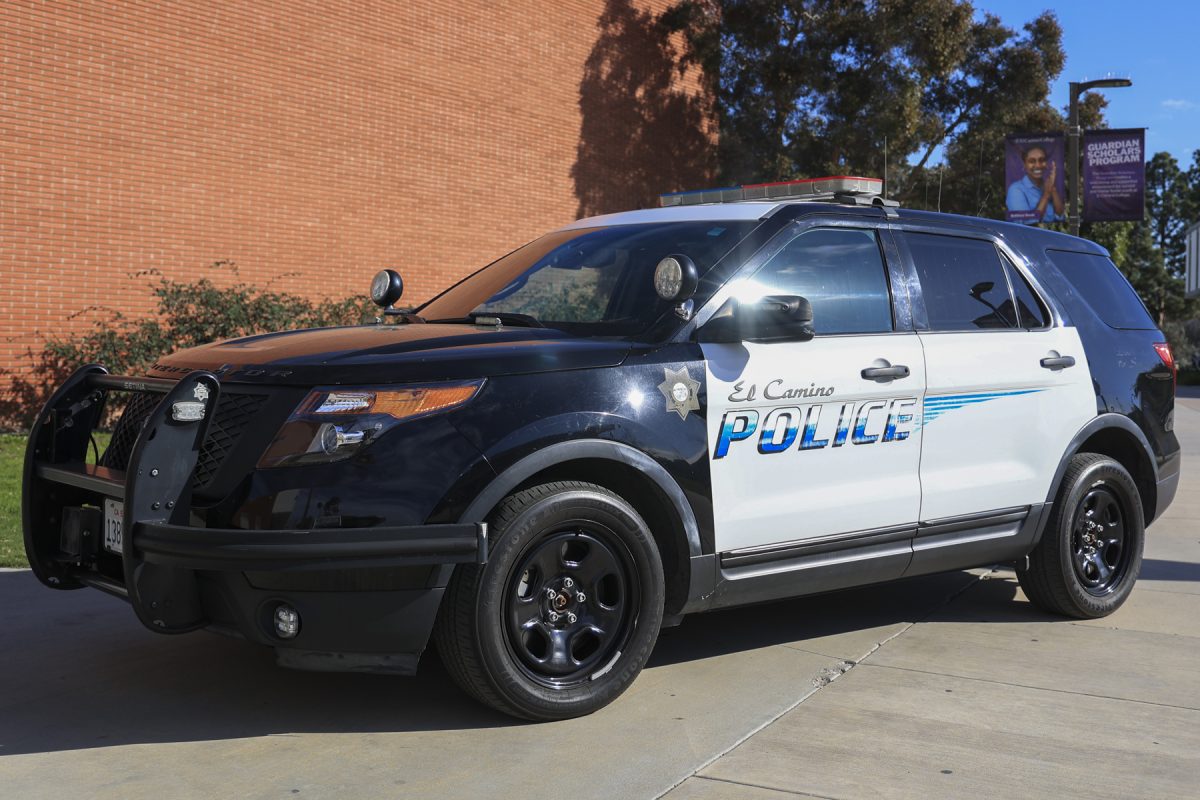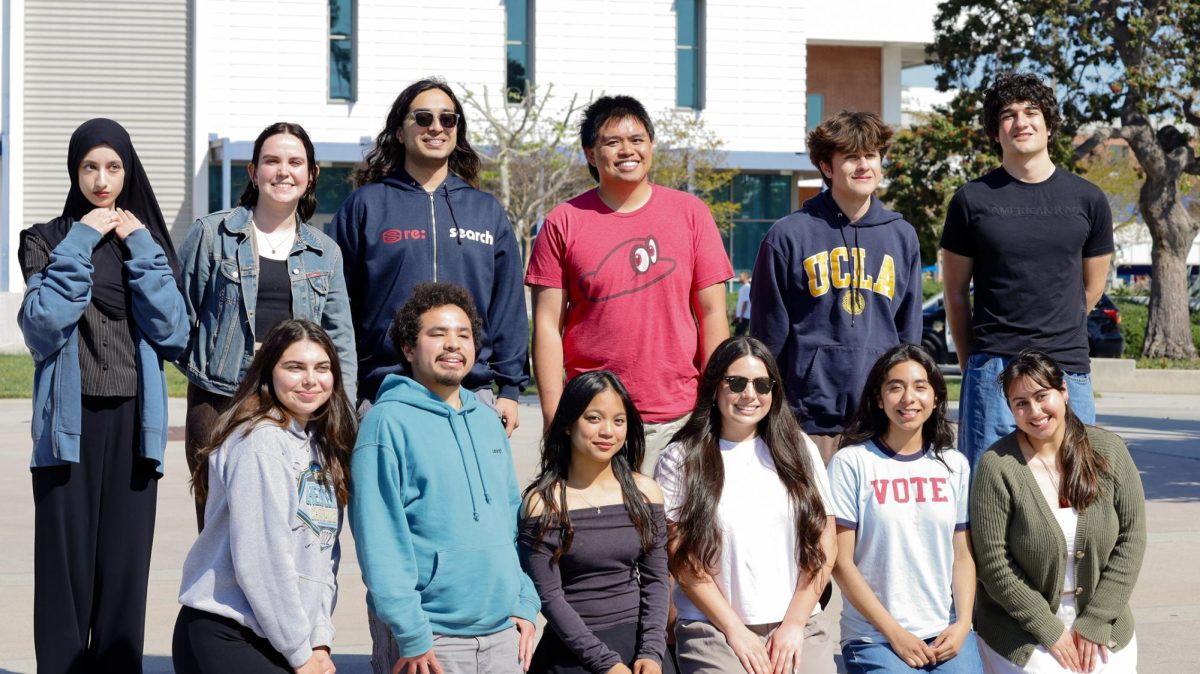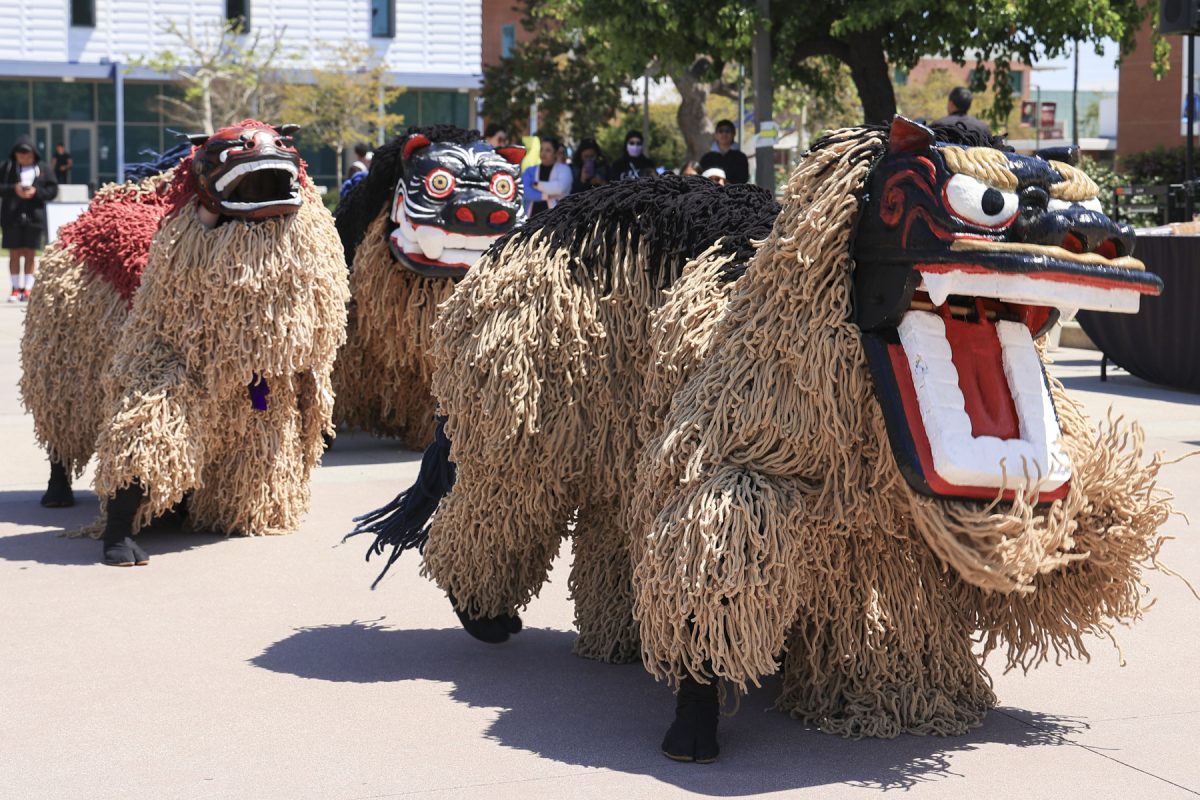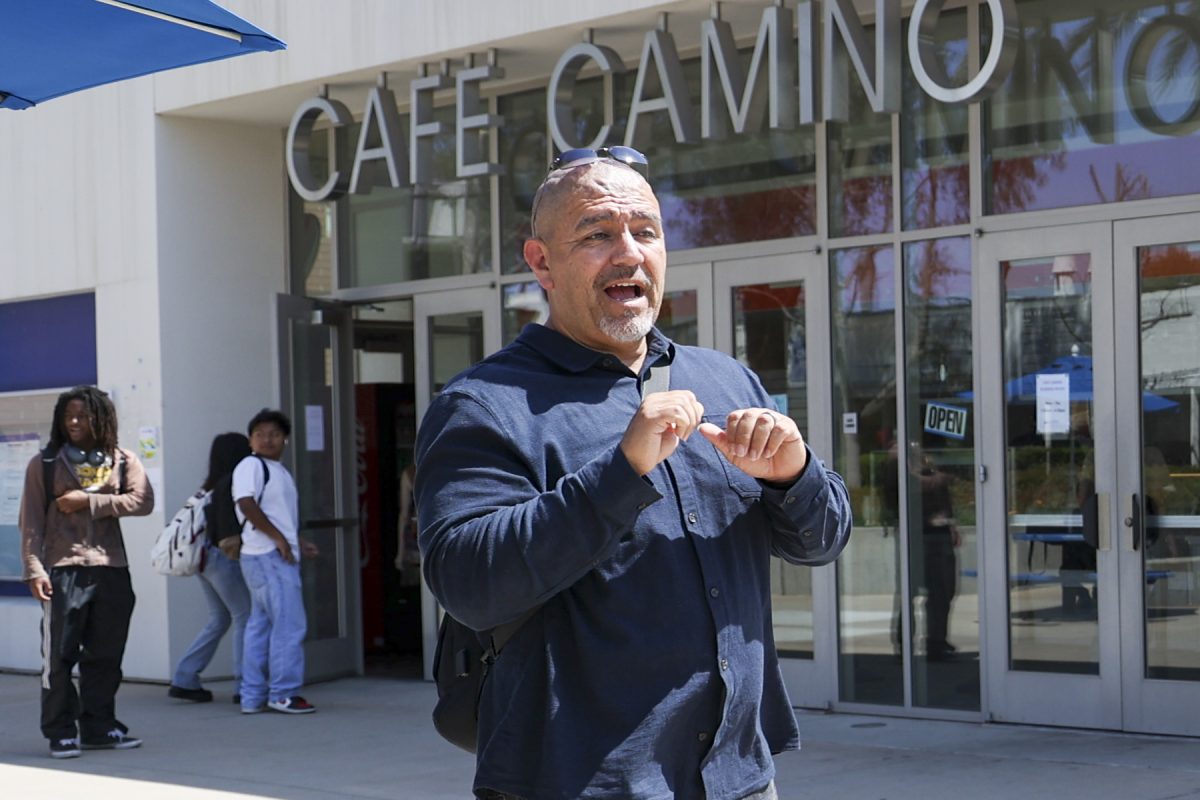In a grand finale to Women’s History Month, the El Camino College Art Gallery celebrated the birthday of the “mother of Los Angeles architecture,” a woman who contributed to L.A. history in the 1920s through famous buildings including the Hollyhock House.
Many consider Pennsylvania-born Louise “Aline” Barnsdall to have initiated L.A.’s modern architecture movement by introducing world-renowned architects to the city and commissioning them for projects.
The Art Gallery celebrated Barnsdall’s birthday, which is on April 1, with a special exhibit and cake-cutting ceremony on Thursday, March 28, where Barnsdall’s great-granddaughter was present.
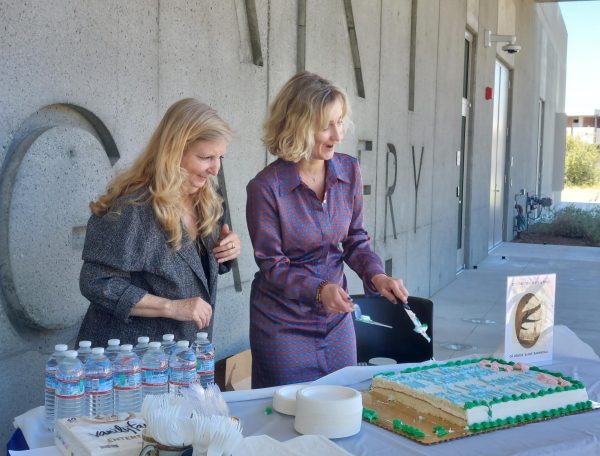
“She was devoted to the arts, and she really wanted community, community through art,” her great-granddaughter Kate Devine-Brady said.
Barnsdall, the daughter of a wealthy oil producer, is best remembered today for commissioning architect Frank Lloyd Wright to create the Hollyhock House in 1919, originally designed as a place of residence for Barnsdall.
“It was her vision to create a cultural arts park and center,” Brady said. “She did it the best that she could, but again, being a woman, there were lots of obstacles.”
Barnsdall later donated the building to the City of Los Angeles in 1927 to create an art park that catered to the community. As part of the donation, the city is required to offer art classes and other activities at a low cost.
One century after its commission, Hollyhock House became a UNESCO World Heritage Site in 2019.
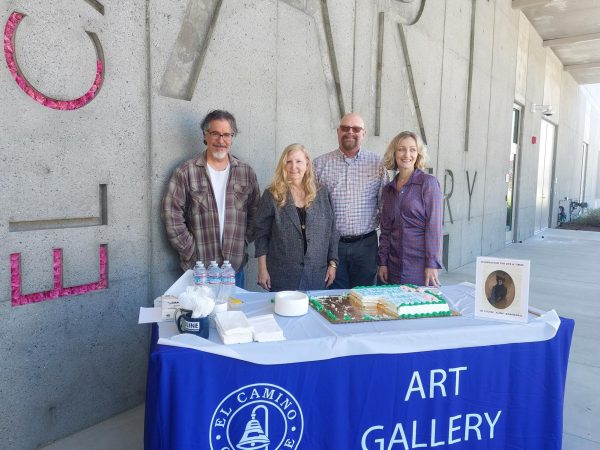
“Aline was a woman who was beyond her time, she was way ahead thinking about supporting the community,” Michael Miller, director of gallery and museum programming, said. “[Hollyhock House] was her opportunity to give back, using her money that she inherited from her father and grandfather.”
Barnsdall saw potential in Wright during a difficult time in his career, giving him both the resources and creative freedom needed for his work on Hollyhock House. Brady said he later became “one of the most recognized, if not the most recognized, architects in the United States.”
Yet, despite the prominence of Hollyhock House, “Barnsdall doesn’t appear as the main character in the history of [the house],” Brady said.
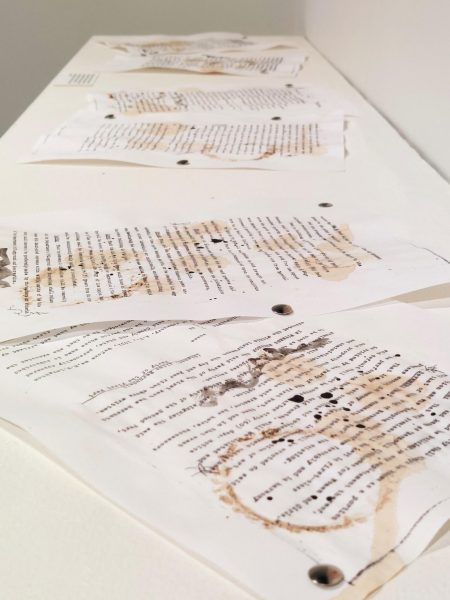
“[The Hollyhock House] is her greatest masterpiece. Her artwork was building and donating it. And to this day, it’s a huge cultural arts center for the city of Los Angeles, right by Hollywood,” Brady said.
The Barnsdall exhibit, an addition to the main exhibit featuring the work of El Camino architecture students, included nine posters and excerpts of the Hollyhock House donation deeds, providing details and images about her life and work.
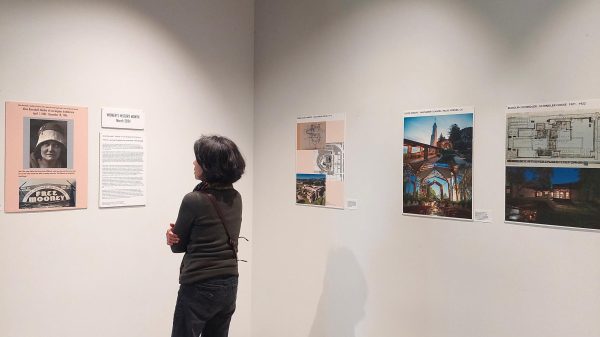
Miller said he worked at Barnsdall Park with art gallery associates Carrie Lockwood and Mark Lucero, and met Brady while working there. Lockwood said Miller initiated the tradition of celebrating Barnsdall’s birthday during his time at Barnsdall Park.
“It is our responsibility to ensure a place in history for Aline Barnsdall,” Brady said. “I think this [event] is a beginning place of spreading a little bit more attention and recognition on her contributions.”
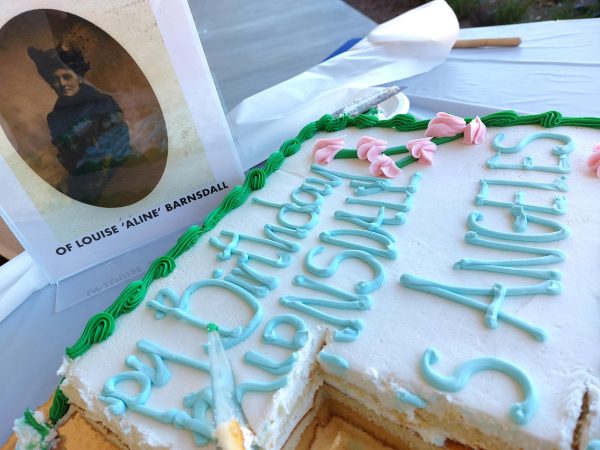
El Camino accounting officer Harriet Woo stopped by the Art Gallery to see the Barnsdall exhibit.
“Since I’ve been to the Hollyhock House, I thought ‘Oh wow, I didn’t know about Aline Barnsdall’,” Woo said. “It is good that the school is organizing this, so we can learn more about her.”
The event was the last in a series celebrating Women’s History Month at the college.
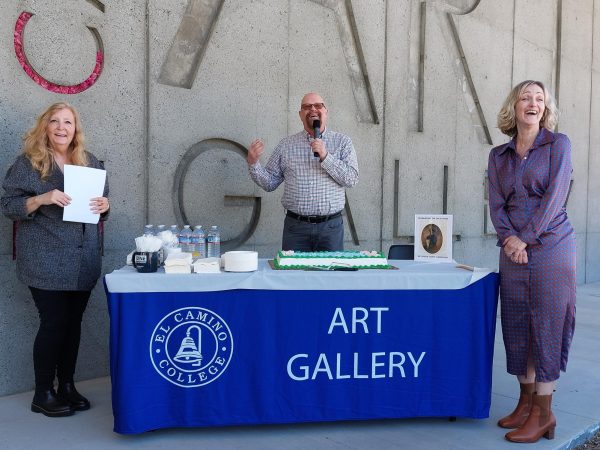
“Bringing attention to a woman who had this vision, and acknowledging the contributions of women, is really important,” Miller said. “It is Women’s History Month, and we should always acknowledge everything everybody does for the community.”



